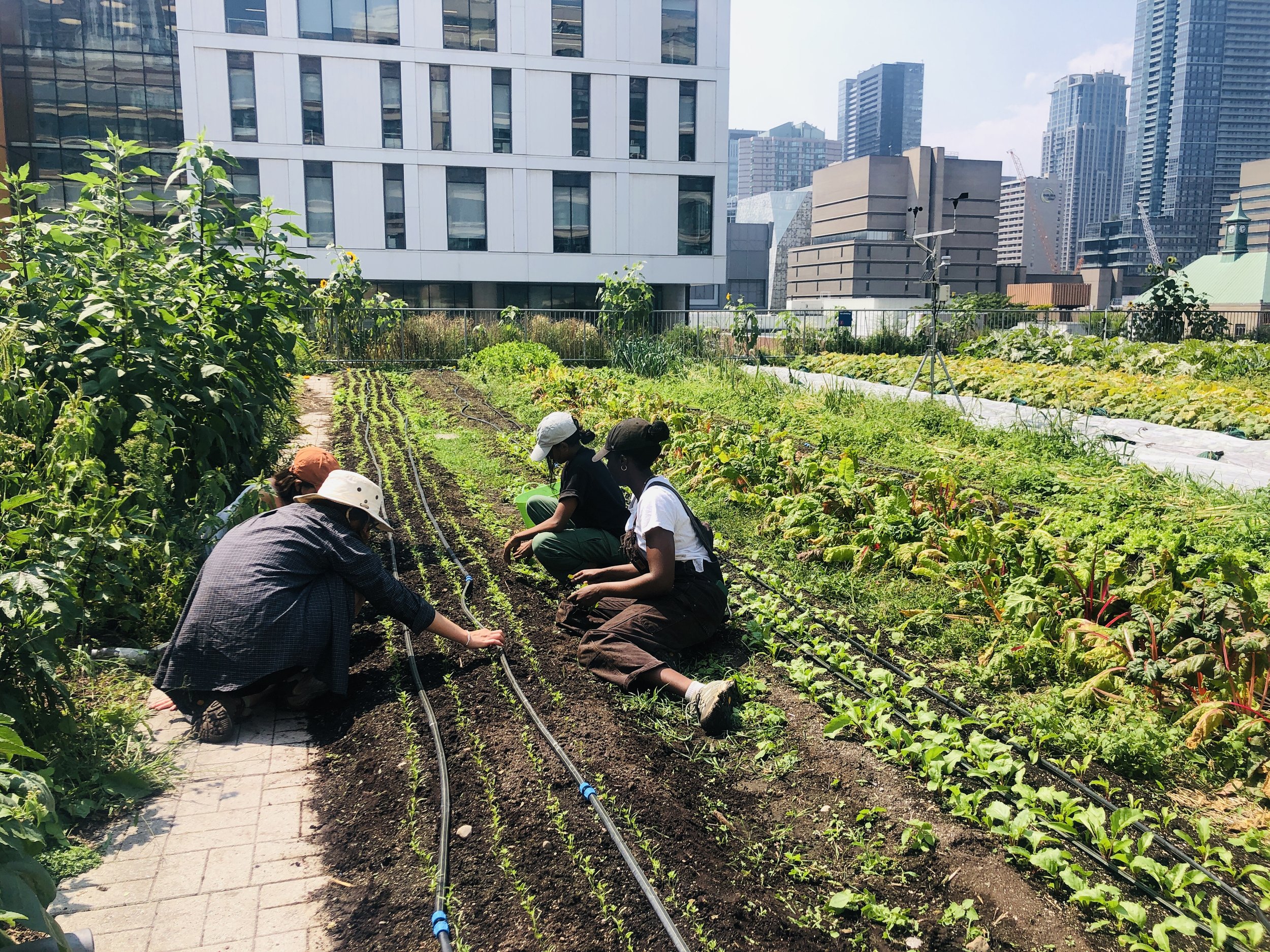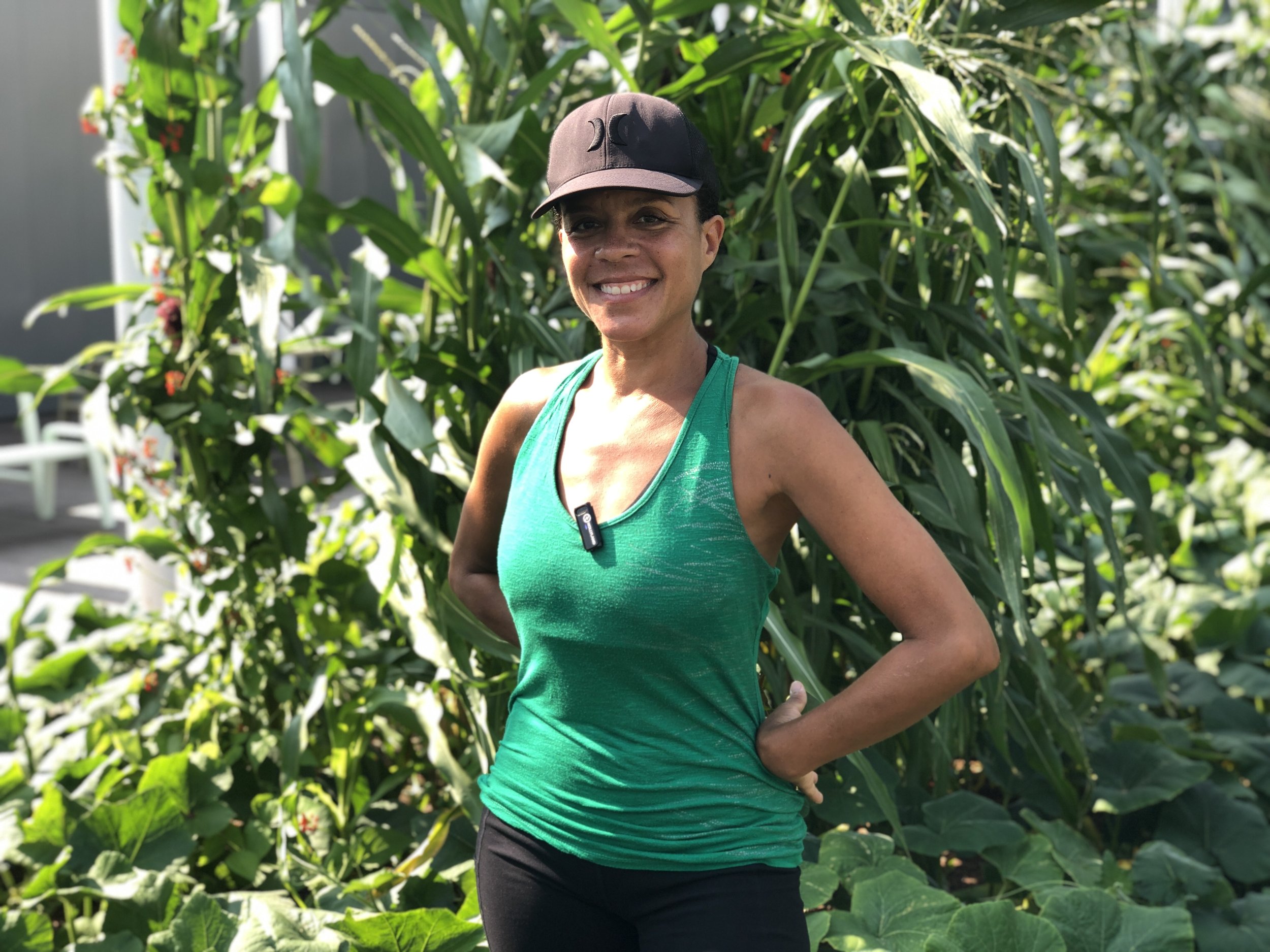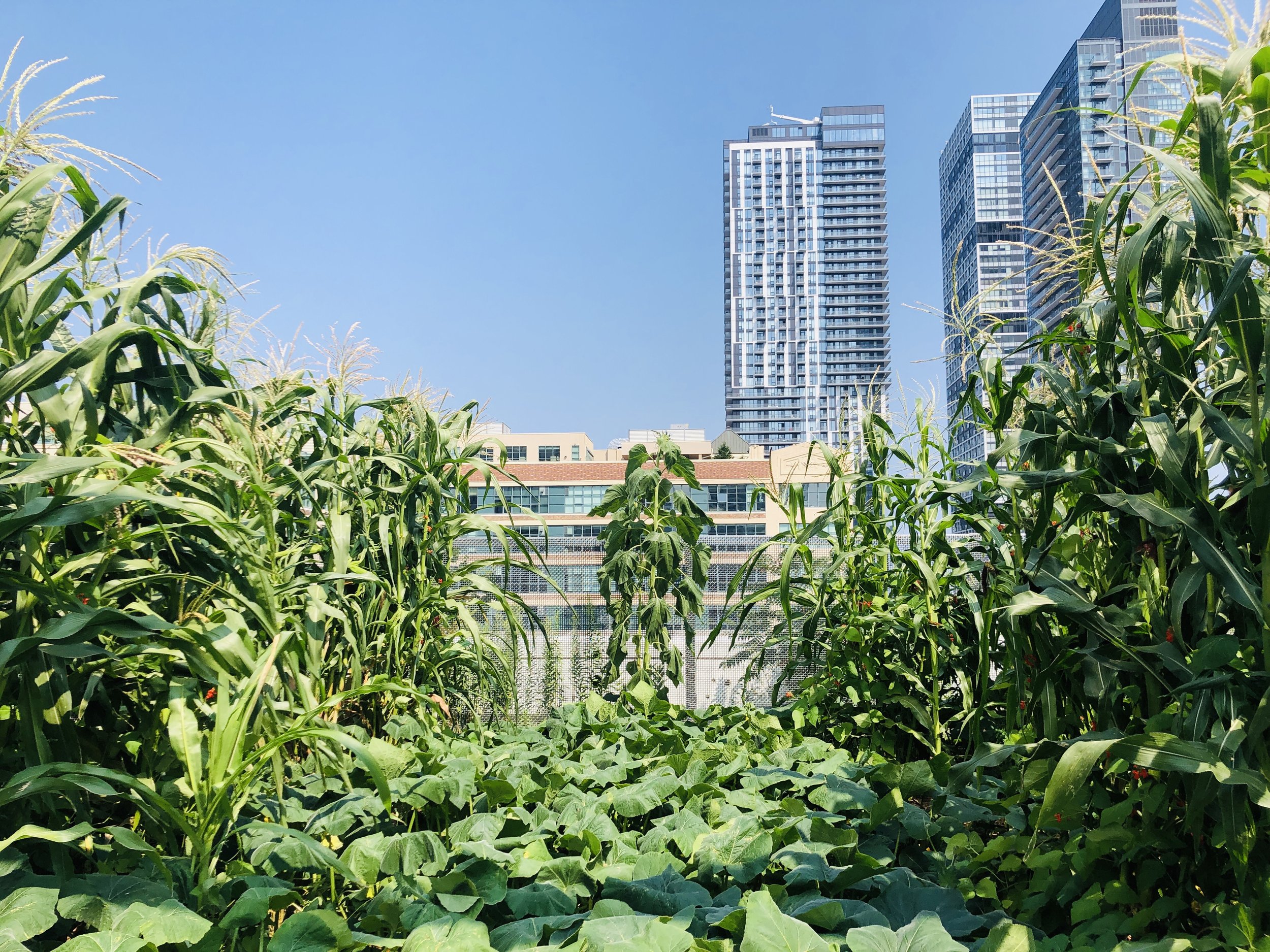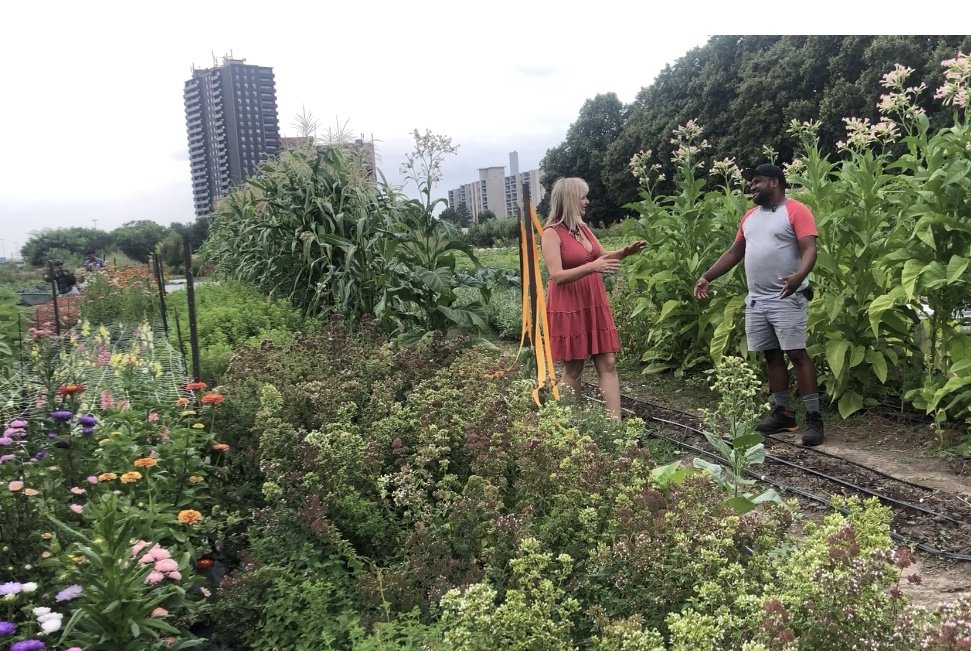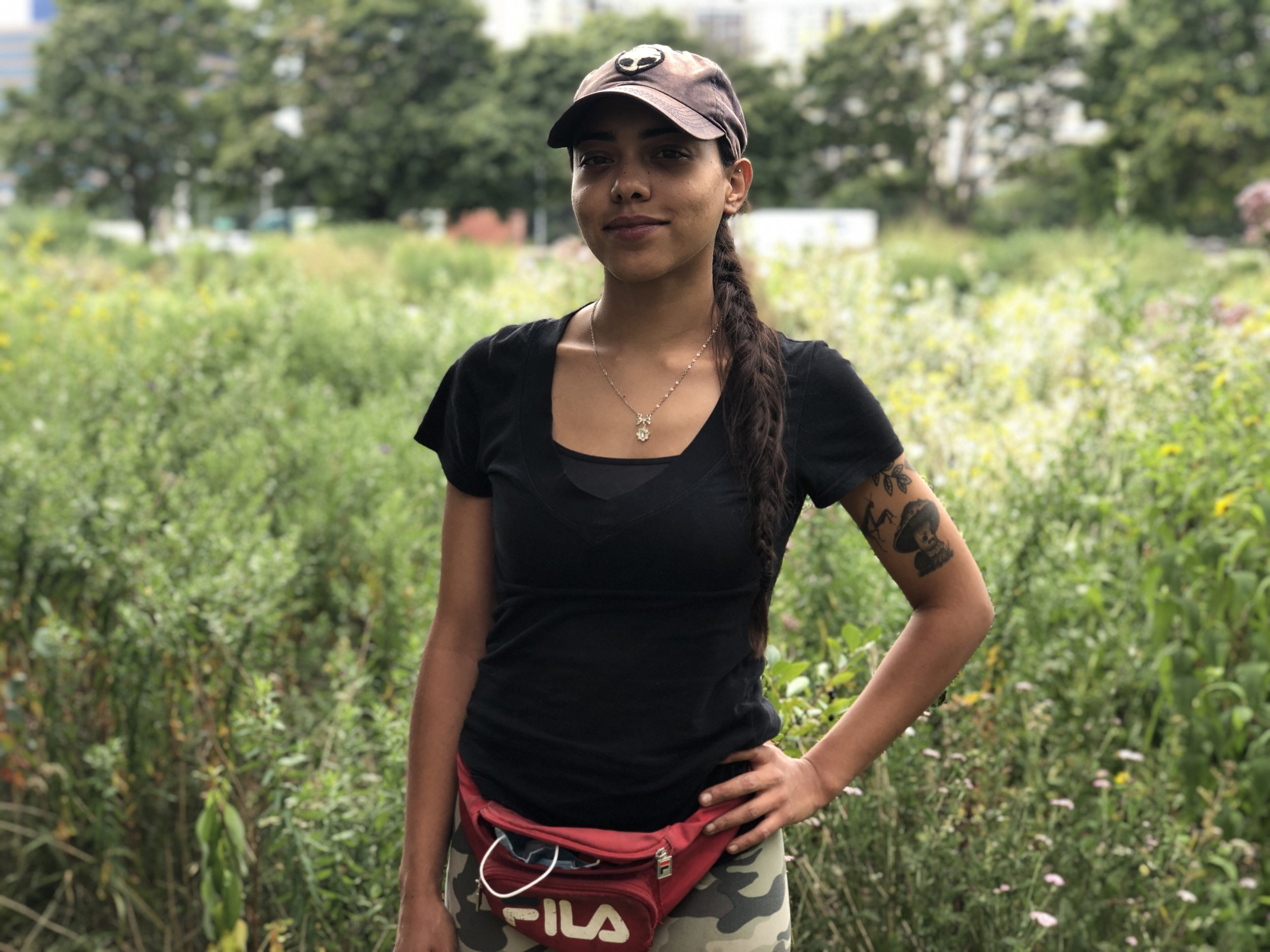Toronto rocks in the green world
Blackout
I arrived in Toronto exactly twenty years since the mythological blackout. For those who don’t remember, aren’t aware or weren’t even born yet: in August 2003, a software bug plunged 55 million people in North America into total darkness. Before I even got the chance to unpack my bags my Airbnb host, a musician called Michelle, texted me to tell me to get down to Grange Park for some blackout musical celebrations.
The local park was just a short walk from the boho neighbourhood of Kensington Market where I was staying. Pockets of crowds, attentively listening to a four-piece jazz band, were lounging on the worn-out summer grass. I managed to find Michelle and we watched the free flow of bands getting up and doing their thing as her friends recounted romantic blackout stories about spontaneous cookouts, making music and art, all back lit by candlelight. If the evening’s celebrations were anything to go by the darkness definitely ignited some real community spirit.
We walked along the blackout party parade route through the city following fire throwers, drummers and fairy-light lit women on mobility scooters. The whole city seemed to be there: young, old, all races and religions, and as I marched forward I couldn’t help but feel excited about the people I was going to meet in Toronto.
Toronto is one the most multicultural cities in the world (60 per cent of its population being born outside of Canada) and this is very much reflected in the food it grows. A big part of my research is looking at how urban agriculture can be inclusive and reflect the local population. I had four days to get to grips with the city’s people and urban agriculture. I felt like I had already made a good start.
Car in Kensington Market
Cabbage and long grass laws
Toronto has a history of urban growing that dates back to 1840, when new Macedonian and Irish immigrants who had fled famine used their front lawns and to grow cabbages and other vegetables, leading to east central Toronto being dubbed ‘Cabbagetown’.
Nearly two centuries later, Professor Nina Marie Lister, an ecology and urban planning professor at Ryerson University who runs Ecological Design Lab, got served notice because some of the home-grown native plants in her front lawn were too tall for one of Toronto’s bygone by-laws. The ‘long grass and weed bylaw’ stated that grass, weeds and vegetation cannot be taller than twenty centimetres. A conviction can include forced mowing, at the landowner's cost, and a fine of up to $5,000 – and some of Professor Lister’s plants were pretty leggy, between 90 and 120 centimetres.
Thankfully Professor Lister was right person to fight the biodiversity battle. Using her extensive knowledge of ecology, she changed the outdated by-law to give residents the constitutional right to cultivate a natural garden, helping to provide habitats, connecting landscapes that actualise the biodiversity goals identified by the City of Toronto.
Wilder gardens
My first meeting in the city was with Emma Tamlin, engagement manager at Green Roofs for Healthy Cities and co-chair of the Toronto Youth Food Policy Council. On my way to meet Emma at Café Contra near Ossington Station I was struck by how Toronto residents had turned their front gardens into wildlife-friendly havens and growing spaces, further evidence that Professor Lister had firmly kicked the outdated by-law into the long grass.
Toronto’s green roof by-law
Emma explained how in 2009 Toronto became the first city in North America with a bylaw that both requires green roofs and establishes the construction standards for them. More specifically, if a new building is over 2000 square metres than it has to have a green section: if developers don’t or can’t install a green roof they have to pay $200 per square metre. This is what funds Emma’s programme, where anyone can apply for funding to support the installation of green roofs and cool roofs on Toronto homes and buildings.
Toronto takes green roofs seriously for good reason. The benefits of green roofs have been known since ancient Mesopotamia, where massive stone structures were built between 4000 and 600 BC. The ziggurats were great stepped pyramid towers of stone, built in stages. At the landings of these stepped towers, plantings of trees and shrubs on flat terraces softened the climb and offered relief from the heat of Babylon. From the 1600s to 1800s, Norwegians used soil on roofs as insulation, utilizing grasses and other species to hold the soil in place. In cold climates green roofs increase internal heat retention, and in hot climates they help to keep the heat out.
Toronto’s green roof bylaw defines a green roof as an extension of an above grade roof, built on top of a human-made structure, that allows vegetation to grow in a growing medium and which is designed, constructed and maintained in accordance with the Toronto Green Roof Construction Standard. A green roof assembly includes, as a minimum, a root repellent system, a drainage system, a filtering layer, a growing medium (soil) and plants, and is installed on a waterproof membrane of an applicable roof. Green roof systems are most often installed on a flat roof, but can be installed on a sloped roof with a few additional considerations. Green roof systems are generally classified as extensive, semi-intensive or intensive.
Toronto Metropolitan University’s green roofs
After meeting Emma, I was looking forward to seeing the Toronto’s green roof bylaw in action and my next stop was meeting Sharene Shafie, research coordinator at the Urban Farm, Toronto Metropolitan University, for two rooftop farms on campus that produce and distribute food, facilitate research and engage the community through ecological rooftop farming and food justice initiatives.
Sharene Shafie, research coordinator at the Urban Farm, Toronto Metropolitan University
We started on the George Vari Engineering & Computing Centre rooftop farm that was converted from a green roof to a rooftop farm in 2014, when nutrition students wanted to grow food. By 2015 they were in the full swing of their first growing season. The roof is divided into various sections including a sacred medicine wheel-shaped planting area where they grow sage, tobacco and sweet grass to name just a few. As Sharene explained, they often get party crashers on roof spaces – otherwise known as volunteer plants – that just appear. They don’t remove the plants, as they thrive on this rooftop environment.
The roof-top farm produces around 2,500kg of food per year from its market garden section, producing around 100 different types of fruit and vegetable from April to October. The farm is fully organic, and they use crop rotation and a drip irrigation system. They have a very equitable model for distributing the produce: a third is donated, a third is sold to students at a subsidised rate, and a third is sold at market rate. The food that is donated goes to a number of beneficial organisations including the Native Women Services, Good Food services and outreach work in some of the city’s food deserts.
My favourite part was the natural dye and fibre experiential garden, where fashion students are growing plants such as flax and amaranth to provide natural dye. The roof is a hot bed of research, with a number of PHD students currently looking at capturing storm water and recirculating water in drainage. They also have an apprentice market gardener programme, training gardeners of the future – Sharene was originally part of this programme.
Black and indigenous food sovereignty
Nearby, the Daphne Cockell Building hosts the city’s newest urban roof top farm, home to the Black Food Sovereignty Alliance Programme. I was lucky enough to bump into Nicole Austen, who is leading the Black-centric programme development of the farm: she first became interested in growing when she started to studying nutrition at the university in 2016.
Nicole Austen of the Black Food Sovereignty Alliance Programme
Nicole explained how it was the first purpose-built roof top farm under the green roof bylaw, and is dedicated to black and indigenous food sovereignty. The group first broke ground in 2022, growing various indigenous food crops, including the three sisters: corn, beans and squash planted together creates an ideal environment for success, and holds a strong spiritual and cultural connection to the history of Indigenous people. Nicole explained that this can be expanded to seven sisters: the Holy Trinity of beans, corn and squash, plus sunflower, Jerusalem artichokes, ground cherries and tobacco. They also have a mandala garden – a circular space where they can expand the variety of vegetables they are growing.
Three sisters on the Daphne building rooftop
Nicole has been developing the Harvest Collective and Learning Circle, piloted by the Black staff and community network at Toronto Metropolitan University. It is a community supported agricultural model: for ten Canadian dollars a week people can help harvest food and take it home. The second strand is learning circle (the space itself) where this year they have grown a dozen culturally significant crops to the African diaspora including okra, garden egg, kalou and cerasee.
Nicole is clear that to help people understand what Black food sovereignty is it was important to create a framework, so she designed four key pillars of the programme: food literacy, food and social justice, environmental stewardship and community healing. All aspects are Black lead, Black mandated and Black serving.
The Urban Farm strives to support the health and well-being of the community and surrounding ecosystem by using practices that are ecologically, socially and financially just. This includes growing foods, medicines and plants that are culturally significant to many communities by applying diverse knowledges, foodways and growing techniques.
FoodShare
Meeting Orlando Martin Lopez Gomez, community food growing senior manager at FoodShare
Next I visited one of FoodShare’s community farms. FoodShare is a food justice organisation, advocating for the right to food, and working to challenge the systemic barriers that keep people from accessing the food they need to thrive. The rooftops produce 3000kg of fresh fruit and veg each growing season. FoodShare employees get more than the living wage ($24 an hour) and they offer lots of benefits, including generous annual leave, wellness days and advocacy and volunteering days.
I travelled by bus to Burmhampton High School, a further education college that specialises in hairdressing and engineering, just on the outskirts of Toronto city centre. Many of the students at the college are new immigrants to Canada. I met Orlando Martin Lopez Gomez, community food growing senior manager who had originally started as a volunteer, along with market gardener assistants Sarina Martins and Luna Galves-Pozo. They were all politically engaged and knowledgeable about social justice.
Garden assistant Sarina Martins
The school growing project was conceived in 2010. It was about showing young people where food comes from and how to grow fruit and veg. Burmhampton High School has a three-acre site divided into three areas: one acre for food, one acre for pollinators and the rest an orchard. Surprisingly it was only started in 2019: it felt and looked like it had always been there.
The site is also next to a terribly busy road, and when the growers started farming they had to improve the soil with organic matter as it is very heavy clay. They have done such a brilliant job of bring life to this this site as it now contains hundreds of pollinators – the brightly coloured rudbeckia and echinacea really stood out for me.
Most of the plants and vegetables are grown from seeds or plug plants. There are 65–75 different crops and the type of crop grown is decided by the community. As we walked around, Orlando handled various delicious organic produce including okra, bitter melon and Easter egg plant. Orlando said he is always learning, and that a group of women involved with the project were using pepper leaves, not the pepper to make delicious food. Each vegetable patch is divided by pollinators. It is a fully organic farm and they use landscape fabric over cabbages to to deter pests instead of using harmful pesticides.
As we walked around we chatted to a number of young people who had their own patch of land to help them support their businesses, including flower growing and plants for soap products. The growers’ enthusiasm for the space and the opportunity was evident.
They have a section for compost, and actively encourage the community to bring their food waste, for which they can get cash to exchange for food at the farmers market. FoodShare sell their produce at the farmers market at a lower than market value. They are trying to shift the model and growing and selling to the community they directly serve helps to reduce the price. They sell culturally appropriate produce, and it is accessible for people. Their vision – that everyone can feed themselves and their loved ones – was clearly in action.
Community
It is clear that Toronto’s by-laws are providing a real incentive for people to set up green roofs. Diverse communities across the city are using these spaces to flourish and connect, feed themselves nutritious produce, and keep culinary and cultural connections to their countries of origin.

